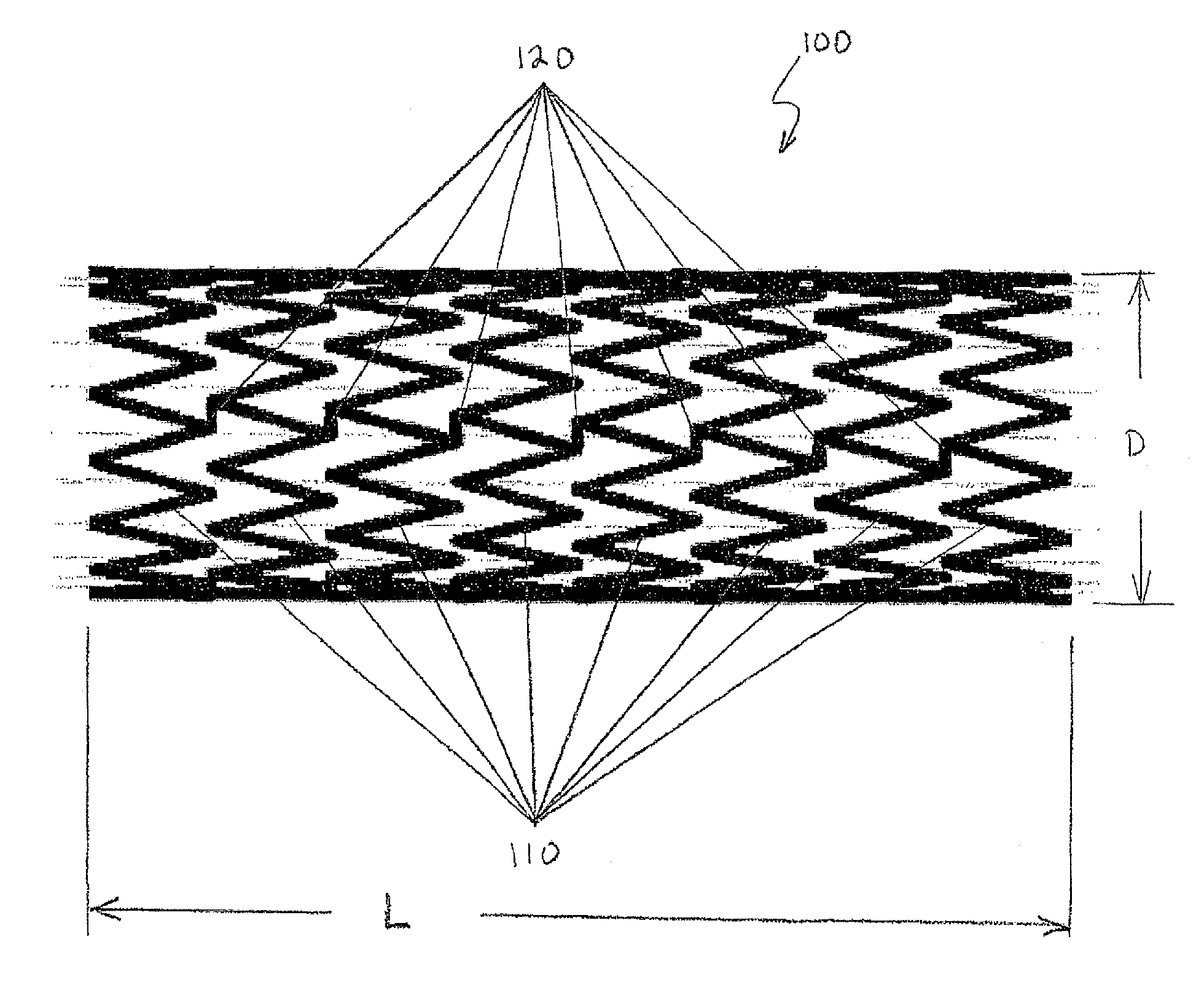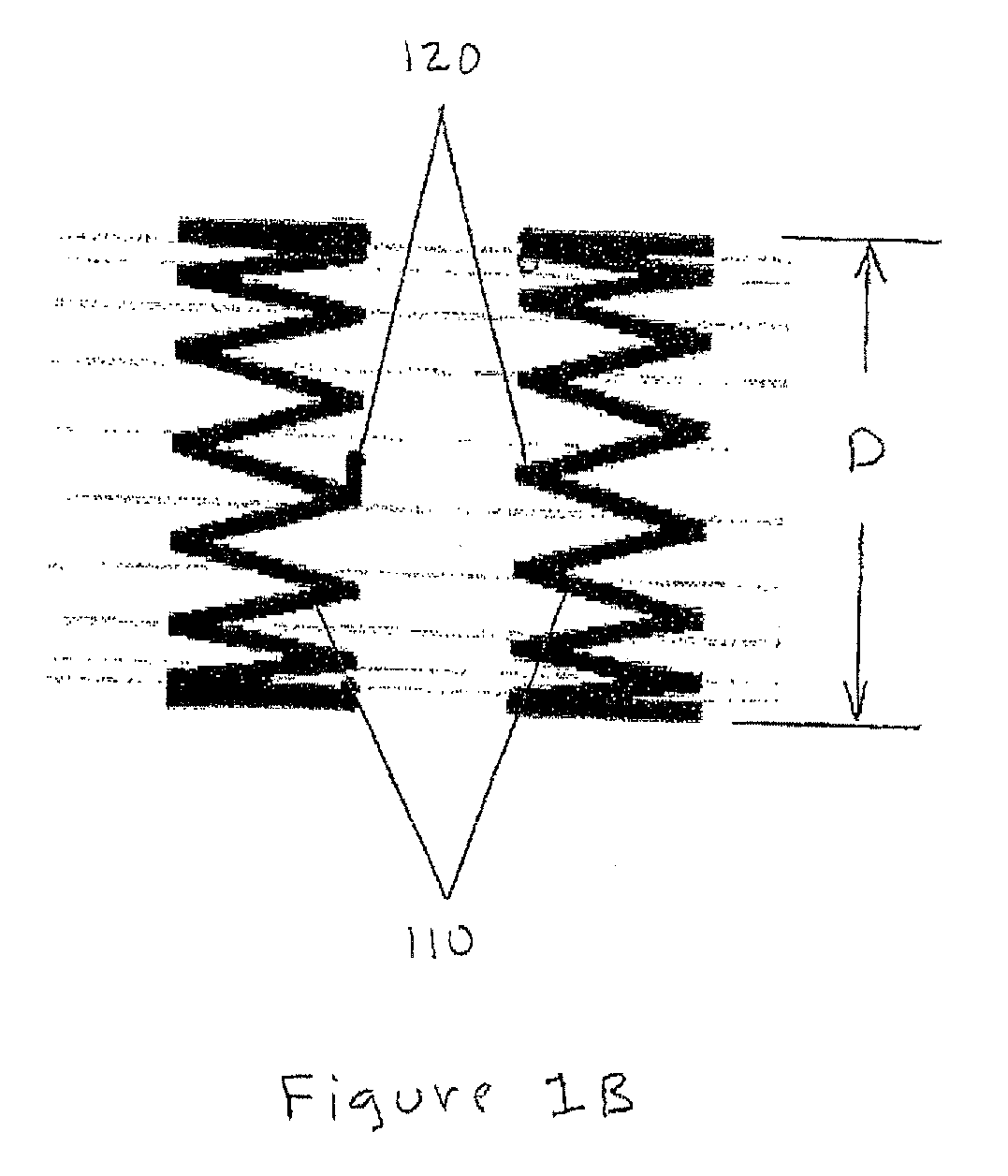Multi-layer coating system and method
a coating system and multi-layer technology, applied in the field of multi-layer coating system and method, can solve the problems of mechanical or thermal injury, failure of implanted devices, preventing the acquisition of useful mr images,
- Summary
- Abstract
- Description
- Claims
- Application Information
AI Technical Summary
Problems solved by technology
Method used
Image
Examples
Embodiment Construction
[0028] A stent is an expandable tubular mesh structure that is inserted into a lumen structure of the body to keep it open. Stents are used in diverse structures in the body such as the esophagus, trachea, blood vessels, and the like. Prior to use, a stent is collapsed to a small diameter. When brought into place it is expanded either by using an inflatable balloon or is self-expending due to the elasticity of the material. Once expanded the stent is held in place by its own material strength. Stents are usually inserted by endoscopy or other procedures less invasive than a surgical operation. Stents are typically metallic, for example, stainless steel, alloys of nickel and titanium, or the like and are therefore electrically conducting.
[0029]FIG. 1A is a schematic illustration of one embodiment of a stent to which the invention may be applied. FIG. 1A is a side elevational view of a tubular stent 100 having a length L and a diameter D. Stent 100 is comprised of a plurality of elec...
PUM
| Property | Measurement | Unit |
|---|---|---|
| overlap angle | aaaaa | aaaaa |
| overlap angle | aaaaa | aaaaa |
| resonant frequency | aaaaa | aaaaa |
Abstract
Description
Claims
Application Information
 Login to View More
Login to View More - R&D
- Intellectual Property
- Life Sciences
- Materials
- Tech Scout
- Unparalleled Data Quality
- Higher Quality Content
- 60% Fewer Hallucinations
Browse by: Latest US Patents, China's latest patents, Technical Efficacy Thesaurus, Application Domain, Technology Topic, Popular Technical Reports.
© 2025 PatSnap. All rights reserved.Legal|Privacy policy|Modern Slavery Act Transparency Statement|Sitemap|About US| Contact US: help@patsnap.com



